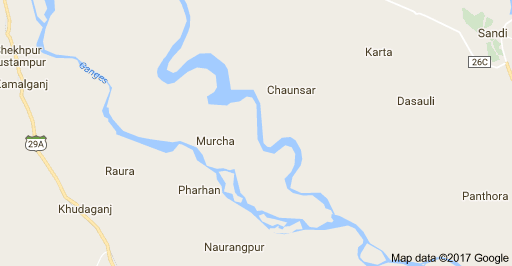Ramganga River
The geographical extent of the Ramganga sub-basin lies between 78° 14' to 80° 8' east longitudes and 27° 7' to 30° 6' north latitudes of the country. The Ramganga is the first major tributary joining the Ganga. It rises at an altitude of about 3,110 m in the lower Himalayas near the Lohba village in the Garhwal district of Uttarakhand. The length of the Ramganga river from the source to the confluence with the Ganga is 596 km. During its course, the river flows through a mountainous terrain and has a number of falls and rapids. The river enters the plains at Kalagarh near the border of the Garhwal district, where the famous Ramganga dam has been constructed. Beyond Kalagarh, the river flows in a southeasterly direction and finally joins the Ganga on its left bank near Kanauj in the Fategarh district. The river flows entirely in the states of Uttarakhand and Uttar Pradesh. The catchment area of the sub-basin is about 32,493 Sq.km.

(Source: google maps accessed on 10.01.2017)
Ramganga flows by the Corbett National Park near Ramnagar of Nainital district from where it descends upon the plains. Moradabad, Bareilly, Badaun, Shahjahanpur and hardoi cities of Uttar Pradesh is situated on its banks. The Ramganga Dam crosses the river at Kalagarh for irrigation and hydroelectric generation.
The important tributaries that join the Ramganga river are the Ban, the Khoh, the Gangan, the Gagas, the Aril, the Kosi, the Haldgadi Rao and the Deoha.